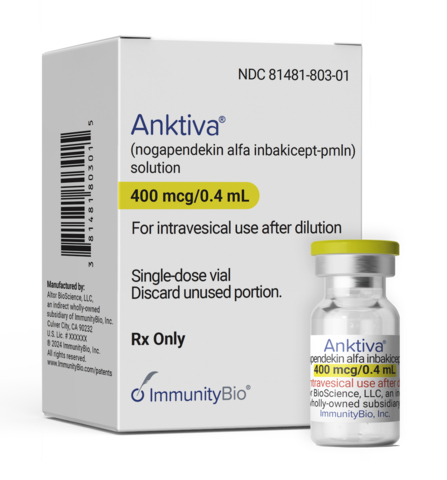Gastric cancer, which originates in the stomach, ranks among the most common cancers globally. Symptoms for early-stage gastric cancer often overlap with those of more mundane stomach-related ailments, leading to late-stage or metastatic diagnoses when cancer has spread from the original tumor site to other body tissues or organs. Gastroesophageal junction (GEJ) adenocarcinoma, a cancer originating at the junction where the esophagus meets the stomach, carries low five-year survival rates for metastatic stage patients. Consequently, new therapies are continuously investigated to increase and prolong survival rates.
In a significant development, Astellas Pharma announced that the US Food and Drug Administration (FDA) and the European Medicines Agency (EMA) had accepted their applications for Priority Review and Marketing Authorization respectively for zolbetuximab. This investigational first-in-class Claudin 18.2 (CLDN18.2)-targeted monoclonal antibody is being evaluated for the first-line treatment of patients with locally advanced unresectable or metastatic HER2-negative gastric or GEJ adenocarcinoma whose tumors are CLDN18.2-positive.
“Astellas is committed to bringing innovative therapies to patients with hard-to-treat cancers, including gastric cancer,” said Moitreyee Chatterjee-Kishore, senior vice president and head of immuno-oncology development at Astellas, in the news release.
The FDA’s Priority Review status requires a decision within six months, a reduction from the standard ten-month review period. Therefore, a decision on these applications is anticipated in early 2024.
How Does Zolbetuximab Work?
Zolbetuximab functions by binding to the CLDN18.2 protein on the surface of gastric epithelial cells, which display abnormal expression levels of this protein compared to normal cells. Preclinical studies have shown that this binding triggers cancer cell death by activating two distinct immune system pathways: antibody-dependent cellular cytotoxicity and complement-dependent cytotoxicity.
XTALKS WEBINAR: Clinical Data Management Insights: Using Digital SoA to Solve Modern Clinical Trial Challenges
Live and On-Demand: Thursday, August 24, 2023, at 10am EDT (4pm CEST/EU-Central)
Register for this free webinar to learn more about optimizing clinical data management processes and how common problems impacting study data quality can be avoided by visualizing the real-time impact of trial design decisions in a digital Schedule of Activities (SoA).
Phase III Clinical Trials Underpinning the Applications
The applications are grounded on two Phase III clinical trials, SPOTLIGHT and GLOW. In both trials, approximately 38 percent of the screened patients had CLDN18.2-positive tumors, where at least 75% of tumor cells exhibited moderate-to-strong membranous CLDN18 staining intensity, as verified by a validated immunohistochemistry assay.
The SPOTLIGHT trial involved a global patient pool of 565 participants from 215 study locations. It assessed the effectiveness of zolbetuximab in combination with mFOLFOX6, a regimen comprising oxaliplatin, leucovorin and fluorouracil, compared to placebo plus mFOLFOX6. The primary endpoint was progression-free survival (PFS), which refers to the duration during which patients live without disease progression post-treatment. The trial aimed to compare PFS between participants administered the zolbetuximab-mFOLFOX6 combination and those receiving placebo plus mFOLFOX6. Secondary endpoints included overall survival (OS), objective response rate (ORR), duration of response (DOR) as well as safety, tolerability and quality-of-life parameters.
The GLOW study enrolled 507 patients from 166 study locations worldwide. This trial examined the efficacy of zolbetuximab combined with CAPOX, a chemotherapy regimen that includes capecitabine and oxaliplatin, in comparison to placebo plus CAPOX. Similar to the SPOTLIGHT trial, the primary endpoint was PFS. Secondary endpoints were also the same, encompassing OS, ORR, DOR, safety, tolerability and quality-of-life measures.
Results from both SPOTLIGHT and GLOW trials indicated a positive impact on PFS for patients undergoing zolbetuximab-based treatment. The SPOTLIGHT trial data indicated that the use of investigational zolbetuximab reduced the risk of disease progression or mortality by 24.9 percent. Data from the GLOW trial revealed that the experimental combination of zolbetuximab and CAPOX decreased the risk of disease progression or mortality by 31.3 percent compared to CAPOX alone.
Other Similar Drugs on the Horizon
Several other drugs with similar targets are also under review. Tislelizumab, an anti-PD-1 monoclonal antibody designed to minimize binding to Fc-gamma (Fcγ) receptors on macrophages, is under review by the FDA and EMA for advanced or metastatic esophageal squamous cell carcinoma following prior chemotherapy.
The FDA is also reviewing a supplemental Biologics License Application (sBLA) for Keytruda (pembrolizumab) in combination with chemotherapy as a first-line treatment for patients with locally advanced unresectable or metastatic gastric or GEJ adenocarcinoma.
Furthermore, atezolizumab is in Phase II clinical development by F. Hoffmann-La Roche for gastric cancer and GEJ, among other cancers.












Join or login to leave a comment
JOIN LOGIN